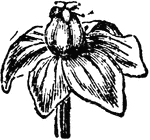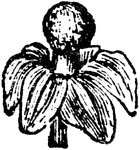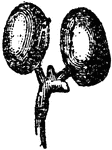Clipart tagged: ‘Indian Berry’

Anamirta cocculus
An illustration of an anamirta cocculus leaf. Anamirta cocculus is an Southeast Asian and Indian climbing…

Anamirta cocculus Flower (Female)
An illustration of an anamirta cocculus female flower. Anamirta cocculus is an Southeast Asian and Indian…

Anamirta cocculus Flower (Female)
An illustration of an anamirta cocculus fruit. Anamirta cocculus is an Southeast Asian and Indian climbing…

Anamirta cocculus Flower (Male)
An illustration of an anamirta cocculus male flower. Anamirta cocculus is an Southeast Asian and Indian…

Anamirta cocculus Flowers
An illustration of an anamirta cocculus branch with flowers. Anamirta cocculus is an Southeast Asian…

Anamirta cocculus Fruit
An illustration of an anamirta cocculus male flower with the sephals removed. Anamirta cocculus is an…